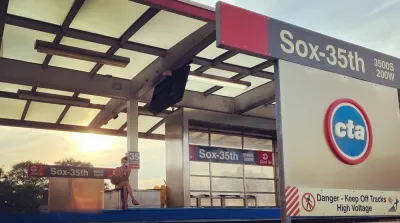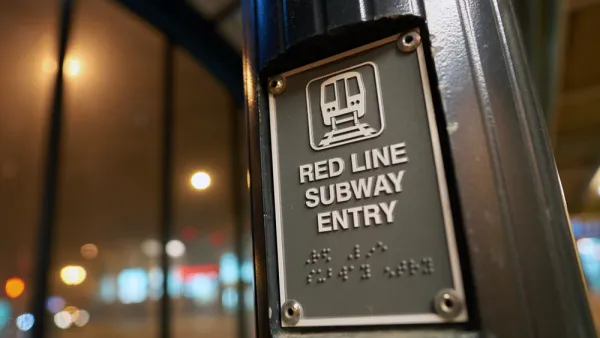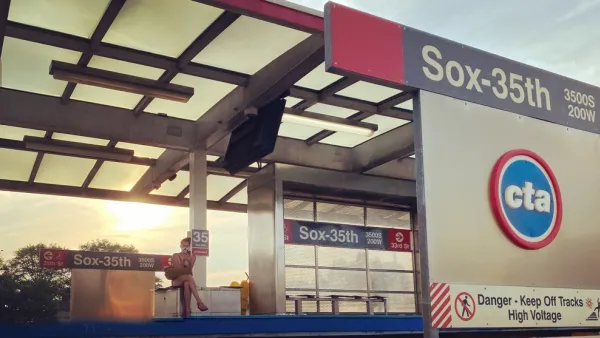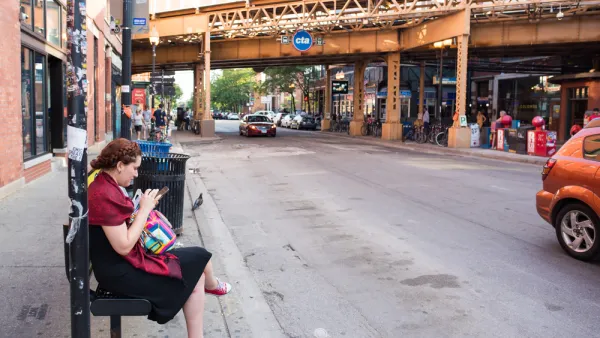The Red Line Extension on Chicago’s South Side could be a game changer, if the city can figure out the local funding.

The Federal Transit Administration (FTA) and the Chicago Transit Authority (CTA) published the Final Environmental Impact Statement for the Red Line Extension (RLE) in August, marking a key benchmark in a project in the works since 2006, with high hopes for delivering economic benefit to parts of Chicago long underserved by public transit.
The 5.6-mile extension will extend the Red Line’s southern terminus from 95th Street to 130th Street, with tracks running at both ground level and on elevated structures.
“The project is one of three major components in CTA’s larger Red Ahead Program, which is designed to maintain, modernize and expand the Red Line – the city’s most traveled rail line,” according to an article by Mischa Wanek-Libman for Mass Transit. In addition to providing details of the extension, Wanek-Libma also neatly lays out the economic development case for the project, noting that the CTA estimates the RLE project would deliver a 46 percent increase in newly accessible jobs within an hour commute of the RLE Project Area.
Jared Brey picked up on the news of the EIS and covers the project from multiple different angles for Governing, including a focus on the controversy surrounding the use of a new tax increment financing (TIF) scheme to raise about $950 million—the local share of the project.
“TIF is used by local officials across the U.S., but nowhere more than in Chicago,” explains Brey. The RLE TIF is different than the city’s typical TIF, however. “For one thing, the school district would still collect its full share of the property tax in the district. It’s also unique in that it would generate the tax increment in an area with more economic activity closer to the urban core and distribute its benefits to a public project in the South Side.” Hence the unofficial title, “equity TIF.” As documented by Brey, the idea is controversial.
Brey also recounts some of the decade-plus of planning that preceded the EIS, and provides a thorough discussion of the economic benefit the extension is expected to deliver to Chicago’s South Side—not to mention the entire city.
FULL STORY: Final EIS/ROD issued for CTA’s Red Line Extension project

National Parks Layoffs Will Cause Communities to Lose Billions
Thousands of essential park workers were laid off this week, just before the busy spring break season.

Retro-silient?: America’s First “Eco-burb,” The Woodlands Turns 50
A master-planned community north of Houston offers lessons on green infrastructure and resilient design, but falls short of its founder’s lofty affordability and walkability goals.

Delivering for America Plan Will Downgrade Mail Service in at Least 49.5 Percent of Zip Codes
Republican and Democrat lawmakers criticize the plan for its disproportionate negative impact on rural communities.

Test News Post 1
This is a summary

Test News Headline 46
Test for the image on the front page.

Balancing Bombs and Butterflies: How the National Guard Protects a Rare Species
The National Guard at Fort Indiantown Gap uses GIS technology and land management strategies to balance military training with conservation efforts, ensuring the survival of the rare eastern regal fritillary butterfly.
Urban Design for Planners 1: Software Tools
This six-course series explores essential urban design concepts using open source software and equips planners with the tools they need to participate fully in the urban design process.
Planning for Universal Design
Learn the tools for implementing Universal Design in planning regulations.
EMC Planning Group, Inc.
Planetizen
Planetizen
Mpact (formerly Rail~Volution)
Great Falls Development Authority, Inc.
HUDs Office of Policy Development and Research
NYU Wagner Graduate School of Public Service





























